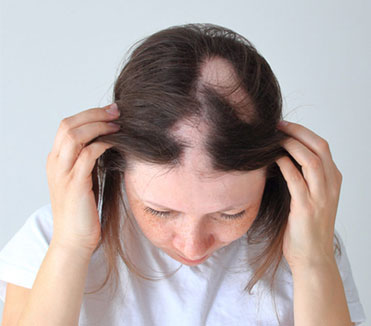
Alopecia Treatment
Alopecia Areata is an autoimmune condition which leads to patchy hair loss. It can affect anyone irrespective of age or gender. Alopecia areata is not life-threatening nor cause physical pain. However, the psychosocial effects of hair loss may be serious.
Patients may also experience some symptoms related to hair loss like inflammation in the eyes and nose which increases with the falling of eyelashes and nose hair. There is no cure for alopecia areata and it only needs treatment. In mild cases, hair usually grows on its own. If treatment needed, steroid injections or topical medications may be recommended. DHEGHAM AESTHETICS Chennai offers the most advanced Alopecia Treatment in Chennai with trained and experienced aestheticians.
Treatments
- Corticosteroid injections: The dermatologist injects corticosteroids directly into the area of hair loss. Patients usually require multiple vaccinations every 4 to 6 weeks.
- Topical medications – Your dermatologist may recommend topical medications such as –
- Over-the-counter minoxidil (Rogaine)
- Prescription finasteride for men
- (Propecia) Spironolactone (Calospia, Aldactone)
- Oral dutasteride (Avodart)
Laser Therapy
Laser treatment can help treat alopecia areata (AA) by reducing inflammation. Low-level laser therapy (LLLT) is also known as red light therapy or cold laser therapy. This can be applied to treat hair loss by beaming photons into the scalp. These photons are absorbed by weak cells and promote hair growth.
Hair Transplant Surgery
Hair transplant procedures are divided into FUE (follicular unit extraction), FUT (follicular unit transplantation), and hair transplantation. FUE is the most popular and successful hair transplant procedure.
- FUE– Follicular unit extraction (FUE) is a type of hair transplantation in which individual hair follicles are removed from the skin and transplanted to another area of the body where hair is thinning or falling out.
- FUT (follicular unit transplantation) – In this transplantation method, a strip of skin is removed from the back of the head under local anesthesia and divided into follicular units or grafts. These grafts are then implanted elsewhere, usually in the front of the head.

